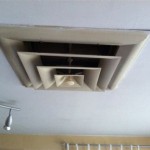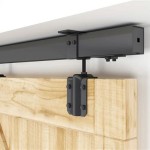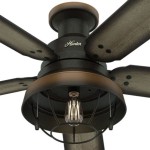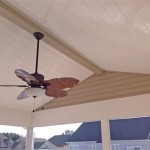How Big Should a Ceiling Fan Be for Your Living Room?
Selecting the appropriate size ceiling fan for a living room is crucial for optimal air circulation and energy efficiency. A fan that is too small will not effectively cool or heat the space, while one that is too large can be overpowering and visually unappealing. Therefore, a methodical approach to determining the ideal fan size is essential. This involves considering the room's square footage, ceiling height, and personal aesthetic preferences.
The primary function of a ceiling fan is to circulate air, creating a more comfortable environment. In the summer, the downdraft cools the room by creating a breeze, while in the winter, reversing the fan’s direction creates an updraft to push warm air down from the ceiling. To effectively perform these functions, the fan’s blade span must be appropriately sized for the room it serves.
Ignoring the impact of an appropriately sized ceiling fan can lead to increased energy consumption and reduced comfort. An undersized fan will require a higher speed setting to achieve the desired airflow, which may increase noise and energy usage. Conversely, an oversized fan may create an uncomfortable draft and consume more energy than necessary. Furthermore, the aesthetic impact of an incorrectly sized fan can disrupt the overall design of the living room.
Several factors contribute to the determination of the ideal ceiling fan size. These factors extend beyond simply measuring the room and involve considering the ceiling height and the desired aesthetic. By carefully evaluating these elements, one can select a ceiling fan that not only functions efficiently but also complements the room's decor.
Key Point 1: Calculating Room Square Footage
The foundation for determining the appropriate ceiling fan size lies in calculating the square footage of the living room. This is achieved by multiplying the room's length by its width. The resulting figure provides a baseline for selecting a fan with an adequate blade span.
For example, a living room that measures 12 feet in length and 15 feet in width has a square footage of 180 square feet (12 ft x 15 ft = 180 sq ft). This calculation is fundamental because it directly correlates with the fan blade span required to effectively circulate air within the room. Without this measurement, the selection process becomes significantly less precise.
Standard guidelines often suggest certain blade spans based on square footage ranges. These ranges provide a starting point for choosing a fan. For instance, a room under 75 square feet might necessitate a fan with a blade span of 36 inches or less. A room between 75 and 175 square feet might require a fan with a blade span of 42 to 48 inches. Larger rooms, between 175 and 350 square feet, generally need a fan with a blade span of 50 to 54 inches. Rooms exceeding 350 square feet may require multiple fans or a single large fan with a blade span of 60 inches or more.
It's important to note that these guidelines are general recommendations. Other factors, such as ceiling height and room layout, can influence the optimal fan size. Therefore, while square footage provides a starting point, it should not be the sole determinant.
Specific scenarios may necessitate deviations from these general guidelines. For instance, an irregularly shaped living room may require careful consideration of the airflow patterns to ensure even distribution of air. In such cases, it may be beneficial to consult with a lighting or fan specialist to determine the most appropriate fan size and placement.
Key Point 2: Considering Ceiling Height
Ceiling height is a critical factor that impacts the effectiveness and safety of a ceiling fan. Insufficient clearance between the fan blades and the floor can pose a hazard, while excessive height can reduce the fan's ability to circulate air effectively. Therefore, understanding the relationship between ceiling height and fan placement is essential.
A general rule of thumb is to maintain a minimum of seven feet of clearance between the floor and the fan blades. This ensures that occupants can move freely beneath the fan without risking contact with the blades. For rooms with standard eight-foot ceilings, this requirement may necessitate using a flush-mount or hugger-style fan, which installs close to the ceiling without a downrod.
Rooms with higher ceilings, exceeding nine or ten feet, benefit from using a downrod, which extends the fan downwards and allows for more effective air circulation. The length of the downrod should be selected to position the fan blades approximately eight to nine feet above the floor. This height optimizes airflow while maintaining adequate clearance.
The use of an appropriately sized downrod is crucial for maximizing the fan's performance in rooms with high ceilings. Without a downrod, the fan may be positioned too close to the ceiling, hindering its ability to draw air from the lower portion of the room and circulate it effectively. This can lead to uneven temperature distribution and reduced comfort.
Specific calculations can be used to determine the ideal downrod length. For example, if the ceiling is 12 feet high, subtracting the desired blade height of 8 feet results in a required downrod length of 4 feet. This ensures that the fan is positioned at the optimal height for air circulation.
Furthermore, it is essential to consider the aesthetic impact of the downrod. While functionality is paramount, the downrod should also complement the overall design of the room. Downrods are available in various finishes and styles, allowing for seamless integration with the existing decor.
Key Point 3: Balancing Airflow and Aesthetics
Selecting the right ceiling fan involves a careful balance between functionality and aesthetics. While airflow is the primary concern, the fan should also complement the overall design of the living room. Choosing a fan that is both effective and visually appealing enhances the room's comfort and aesthetic value.
The style of the ceiling fan should align with the existing decor of the living room. Options range from traditional to modern, with numerous variations within each category. A traditional living room might benefit from a fan with ornate details and wooden blades, while a modern living room might be better suited to a sleek, minimalist fan with metal blades.
Blade design plays a significant role in both airflow and aesthetics. The shape, pitch, and number of blades can all impact the fan's performance and visual appeal. Blades with a steeper pitch generally move more air, while blades with a shallower pitch may be quieter. The number of blades is often a matter of personal preference, although some designs are more efficient than others.
The finish of the ceiling fan is another important consideration. Common finishes include brushed nickel, oil-rubbed bronze, and white. The finish should complement the other fixtures and hardware in the living room, such as light fixtures, door handles, and cabinet pulls. A cohesive finish scheme contributes to a unified and polished look.
Light kits are often integrated into ceiling fans, providing both illumination and air circulation. When selecting a fan with a light kit, it is important to consider the type of lighting and the amount of light needed in the living room. Options range from incandescent to LED, with varying levels of brightness and color temperature. The light kit should provide adequate illumination without being overpowering.
Beyond the physical aspects of the fan, control options also contribute to both functionality and convenience. Many ceiling fans come with remote controls, allowing for easy adjustment of speed and light settings. Some fans also offer smart home integration, enabling control via smartphone or voice assistant. These features enhance the user experience and provide added convenience.
Ultimately, the ideal ceiling fan is one that effectively circulates air, complements the room's decor, and provides convenient control options. By carefully considering square footage, ceiling height, and aesthetic preferences, one can select a fan that enhances the comfort and value of the living room.
Prior to installation, consulting the manufacturer's instructions is crucial for ensuring proper and safe installation. Improper installation can lead to reduced performance, increased noise, and potential safety hazards. If unsure about any aspect of the installation process, it is advisable to seek professional assistance.

Ceiling Fan Size Guide Delmarfans Com

Best Size Ceiling Fan For Your Great Rooms Hunter

How To Choose The Best Ceiling Fan

Best Size Ceiling Fan For Your Great Rooms Hunter

Tips For Choosing Ceiling Fan Size In Singapore Crestar

How To Pick The Perfect Chandelier Ceiling Fan For Your Living Room

The Complete Ceiling Fan Guide Lightopia

Choosing The Right Size Ceiling Fan For Your Space

Stylish Ceiling Fan Ideas For Your Living Room Farmhousehub

Ceiling Fan Size Blade Airflow Guide Value Lights Blog
Related Posts








